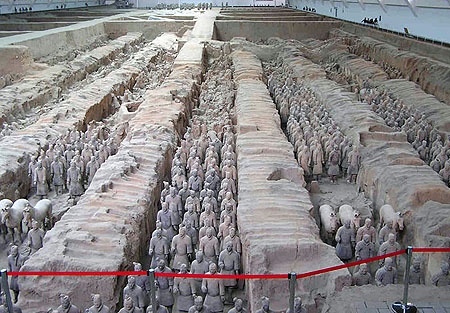![]()
What you must do in this unit
- Read chapters 4 and 9 and the section on China in chapter 12 in the textbook.
- Read my short notes on Classical China and on Wu Zetian.
- Watch my short video.
- So that you don't get confused with all the Chinese dynasties and dates, and everyone gets confused about the early dynasties, it is a good idea for you to have a look at this Timeline of Chinese History and Dynasties.
- Study the Questions to Consider and the Key Terms for the unit.
- Post (or respond) with your thoughts/ideas/comments in the discussion forum: What were some of the characteristics of government in classical China (5 points)?
What you can do in this unit
- Katie Lapp, a second-grade teacher, has written up some of the websites on Ancient China (*.PDF file) that she uses in her class.
- Anna Zogby (fall 2017) has created a Pinterest board on Chinese Ceramics of the Neolithic Period.
- Surgery in Ancient Times, by Samantha Gilchrist, is a great example of an online exhibit for the digital project assignment.
- David Lee Huffman has a nice timeline (digital project) on the Tang dynasty.
- William Wimmer has created a nice story map on the Shang Dynasty.
Some videos that you can watch for this unit
- 2,000 Years of Chinese History! The Mandate of Heaven and Confucius: World History #7
- Confucius and Confucianism
- Zhou, Qin and Han Dynasties | World History | Khan Academy
- The Silk Road and Ancient Trade: Crash Course World History #9
- Biography Confucius
- The Terra Cotta Warriors & Horses of Qin Shi Huang
- For extra credit please suggest to your instructor a relevant video for this unit of the course. Send the title of the video, the URL and a brief explanation of why you find the video interesting and applicable to the material that is being studied in this unit.
Extra Credit Options
- For up to 50 points of extra credit, read Confucius, The Analects and submit the Confucius paper.
- For up to 25 points of extra credit, in a one-page paper, consider a comparison of the Analects of Confucius with the Sermon on the Mount of Jesus of Nazareth or the Sermon at Benares of Siddhartha Buddha. Please cite your sources.
- For up to 10 points of extra credit, read the short excerpt on the idea of the Mandate of Heaven and write a paragraph in which you explain this Chinese conception of political authority. (If the link does not work, and it probably won't, then use this copy.)
- For up to 10 points of extra credit, read the Chinese Accounts of Rome, Byzantium, and the Middle East, c. 91BCE - 1643ce, and in a long paragraph assess the ancient Chinese understanding of the world.
- For up to 5 points of extra credit, you can submit the answers to the Confucius study questions. Please write in formal, complete sentences.
- For extra credit, please suggest a relevant website for this unit of the course. Send your instructor the title of the site, the URL and a brief explanation why you find the information interesting and applicable to the material being studied this unit.
Unit Learning Objectives
- Upon successful completion of this unit, you will be able to (1) describe the characteristics of the historical development of early China, (2) compare and contrast the origin, development and characteristics of Buddhism and Confucianism and (3) identify some of the important individuals involved in the formation of classical Chinese civilization.
